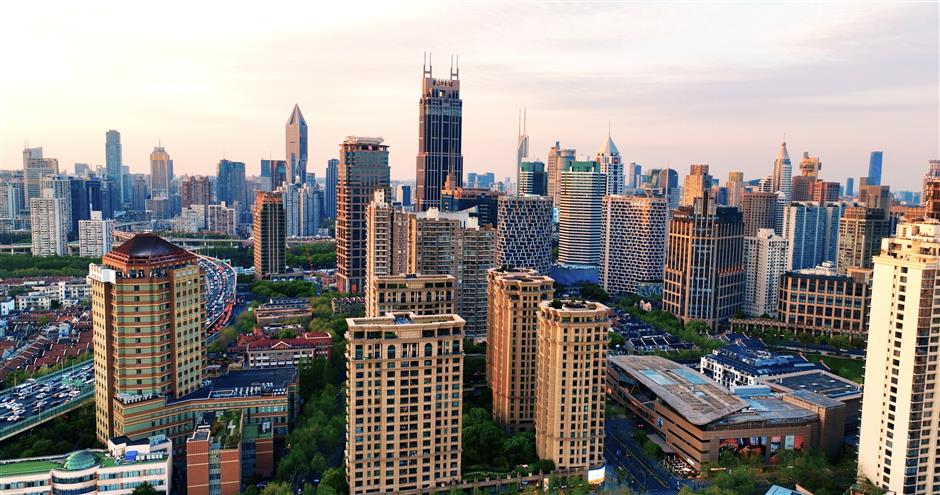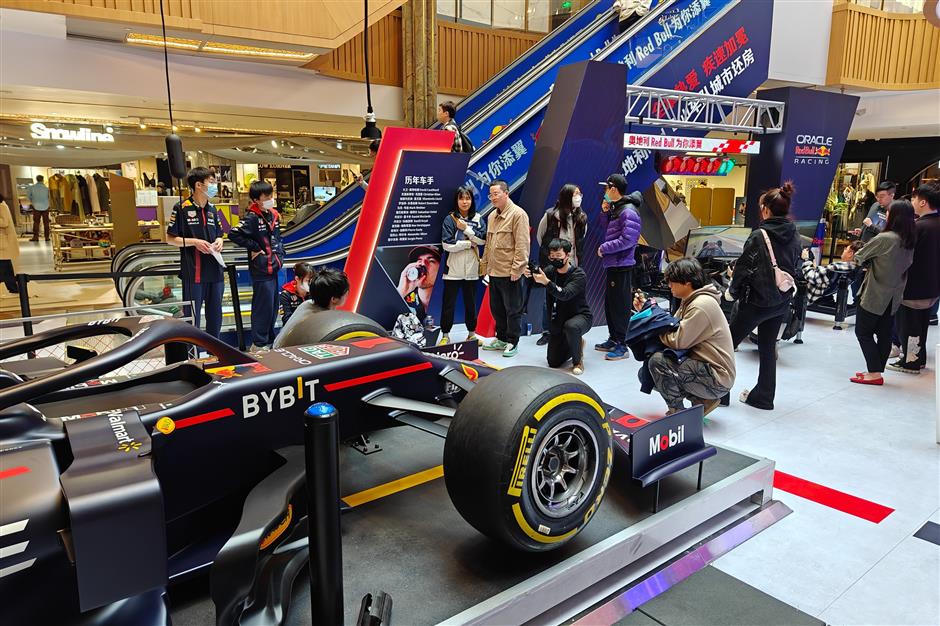Huaihai Road-Xintiandi works to become China's pilot zone for import trade

The skyline of Huaihai Road-Xintiandi area in Shanghai's downtown Huangpu District.
Shanghai's prestigious commercial epicenter on Huaihai Road and Xintiandi is steadfastly pursuing its transformation into a national pilot zone for import trade in a further sign of China's firm commitment to global trade.
The iconic hub in downtown Huangpu District endeavors to cultivate an environment that will not only showcase a plethora of imported goods but also serve as a pivotal gateway for burgeoning trade expansion.
Backed by an ambitious joint action plan unveiled on Monday by the Shanghai Commerce Commission, Shanghai Customs and the Huangpu District government, this strategic endeavor aims to solidify Shanghai's position as an unparalleled symbol of international commerce.
"There is a special feeling in this area and I feel extremely comfortable," said Matthieu Rochette-Schneider, a French designer and general manager of Centdegrés China, a creative and strategic consulting firm located in Xintiandi area.
Rochette-Schneider praised the area for its abundance of shops, artistic ambiance, and overall lifestyle atmosphere, particularly highlighting the intersection of Huaihai Road M. and Madang Road. He emphasized his team's appreciation for the opportunity to work in such an innovative and vibrant district.

An artistic rendition of the Huaihai-Xintiandi import trade pilot zone.
The Huaihai-Xintiandi import demonstration zone was unveiled by eight Chinese ministries, including the Ministry of Commerce and the National Development and Reform Commission, ahead of the 5th China International Import Expo in November 2022.
This local pilot zone, the only newly designated area in Shanghai, was selected alongside 28 other import trade pilot zones nationwide, such as the Beijing Capital International Airport area, the economic and technological development zone of north Tianjin, and the free trade pilot zone in Shenzhen, southern Guangdong Province.
These newly established pilot zones will serve as showcases to optimize the business environment, boost the import trade and service sectors, and enhance consumption patterns.
The Huaihai-Xintiandi zone is one of Shanghai's three pilot areas dedicated to import trade, alongside the Waigaoqiao Free Trade Zone and the Hongqiao International Central Business District.
As the only pilot zone located in the city's downtown area, the Huaihai-Xintiandi zone is set to enhance foreign trade with its two prominent commercial hubs, Huaihai Road M. and Xintiandi, as highlighted by the Huangpu government.

An art installation at the Xintiandi commercial hub.
According to the action plan, by 2027, the annual import trade volume in the area is expected to exceed 100 billion yuan (US$14 billion), with a high density of import trade companies. Additionally, its annual consumption is projected to reach 20 billion yuan.
The Huangpu government reported that numerous foreign and domestic trade firms, along with multinational headquarters, have established their presence in the area. The Huaihai-Xintiandi zone accommodates approximately 3,500 companies and nearly 80,000 employees in 32 high-quality office buildings.
In 2022, Huangpu's total import value was 98.18 billion yuan, with the import value within the Huaihai-Xintiandi zone accounting for approximately 47 percent of the total.
Between January and April, the import value in Huangpu reached 48.8 billion yuan, nearly double that of last year, making it the highest among the 18 local districts.
Wang Nai, deputy director of Huangpu, described the Huaihai-Xintiandi area as a "microcosm" of the district.
Wang said that the area exudes a vibrant commercial atmosphere and is home to world-class landmarks and business zones, playing a crucial role in showcasing imported goods and serving as a key hub for trade expansion.
The area has attracted numerous "debut," "flagship," "concept," and "nightlife economy" stores, which have become essential showcases for imported products.

An art installation at the Xintiandi commercial hub.
The Huangpu government said that it will prioritize trade promotion and innovation to further optimize the business environment and enhance consumer experience within the landmark pilot zone. The district has also introduced a range of supportive measures for multinational trade firms headquartered in the area.
Huaihai Road M., stretching over 2 kilometers, was originally known as Route Paul Brunat when it was constructed in 1900. It was renamed Avenue Joffre, after French marshal Joseph Joffre (1852-1931) in June 1915. In 1949, it acquired its current name to commemorate the Huaihai Campaign, one of the decisive campaigns in the War of Liberation (1945-1949).
Shen Weihua, deputy director of the city's commerce commission, highlighted that Shanghai is the first Chinese city to establish three national import trade pilot zones among all provinces and cities.
Shen stated that the Waigaoqiao and Hongqiao zones are expected to become the two wings, with the Huaihai-Xintiandi zone acting as the heart, to collectively drive Shanghai's development as a global import trade and distribution center.

Customers watch an exhibition at a shopping mall on Huaihai Road M.
















